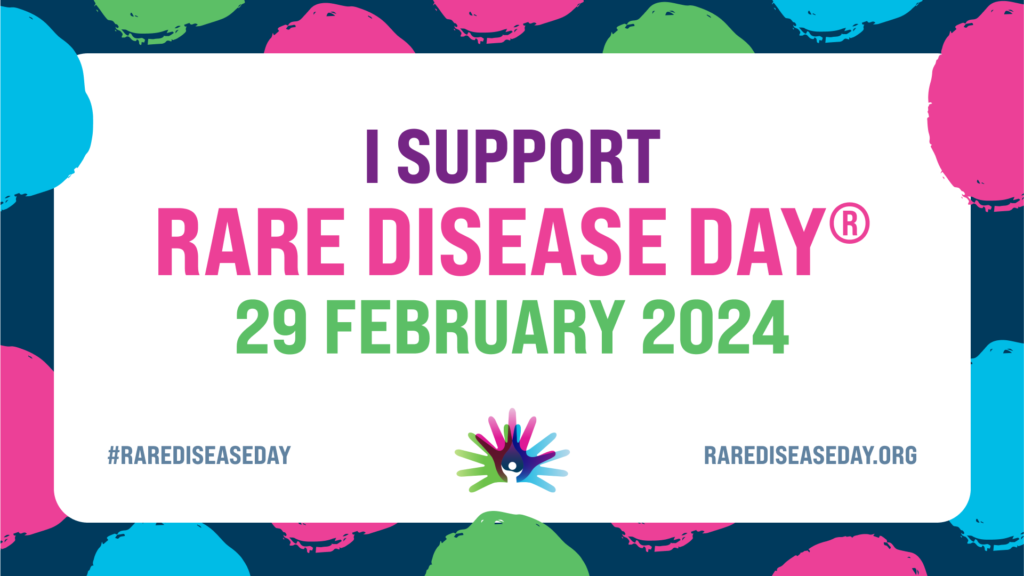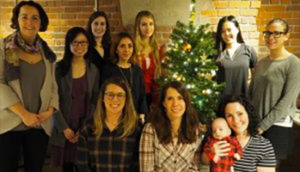
February 29th is Rare Disease Day; rare diseases affect fewer than 1 in 2,000 people,1 while ultra-rare diseases affect fewer than 1 in 50,000 people.2 Globally, around 300 million people are living with a rare disease.1 Research on rare diseases accounts for a substantial portion of our work at Broadstreet and we find that while many of these have a severe impact on the quality of life on both patients and caregivers of those afflicted, they are not well known in the wider population. This year in acknowledgment of Rare Disease Day, we would like to highlight one of these lesser-known conditions, recessive dystrophic epidermolysis bullosa (RDEB). Epidermolysis bullosa (EB) is a group of rare genetic conditions affecting skin and connective tissue that results in very fragile skin where minor trauma causes extensive blisters, tears and other wounds.3-5 RDEB is a subtype of EB which is ultra-rare and more severe.
RDEB is caused by mutations in the COL7A1 gene which lead to a lack of functional type VII collagen, the absence of which affects the ability of the two main layers of the skin, the dermis and epidermis, to cohere. This lack of cohesion means people with RDEB have to live with painful, open wounds that can cover more than 30% their body.6 Some of these wounds are recurrent while others are chronic and can remain open over the long term.7 The condition can make eating challenging, such that many patients suffer from malnutrition.6 In its more severe form, the disease can be associated with infections, the need to use a gastrostomy tube, skin cancer and, ultimately, a shortened lifespan.8 The condition is lifelong, with most patients having symptoms from birth.
Given these symptoms, the burden that RDEB places on patients and their caregivers is immense. Simply caring for a patients’ wounds can take more than four hours a day.9 Both patients and caregivers can experience feelings of anxiety, depression and social isolation.9 The financial burden of RDEB can also be substantial due to frequent specialist doctor visits and the need for costly bandages and medications. Additionally, caregivers of children with EB often have to work fewer hours or give up working entirely as a result of their child’s condition.9
At present, available treatments are mostly focused on reducing symptoms. There is no cure for RDEB,10 and there are currently no approved therapies which can provide sustained wound healing and pain reduction for the large, chronic wounds typical of RDEB. In the absence of a cure, surveys of patients have indicated that speeding up wound healing and closure as well as reducing the risk of skin cancer, the severity and number of wounds, pain, and the risk of infection are treatment priorities.9
Fortunately, some hope may be on the horizon for individuals with RDEB as new therapies are in late-stage development. These treatments have the potential to be important options for patients with RDEB and could play a role in addressing the high unmet treatment needs that accompany this condition.
Providing clients with adroit advice and crucial health economic and outcomes research support for novel therapies is what Broadstreet does best. Get in touch today to discuss how we can support you in this process.
References
1. Rarediseaseday.org. What is a rare disease? 2024; https://www.rarediseaseday.org/what-is-a-rare-disease/. 2. Smith CIE, Bergman P, Hagey DW. Estimating the number of diseases – the concept of rare, ultra-rare, and hyper-rare. iScience. 2022;25(8):104698.
3. debra. EB in Depth. 2021; https://www.debra.org/about-eb/eb-depth. Accessed Dec 11, 2023.
4. Feinstein JA, Jambal P, Peoples K, et al. Assessment of the timing of milestone clinical events in patients with epidermolysis bullosa from North America. JAMA dermatology. 2019;155(2):196-203.
5. Fine J-D. Inherited epidermolysis bullosa. Orphanet journal of rare diseases. 2010;5(1):12.
6. Tang JY, Marinkovich MP, Lucas E, et al. A systematic literature review of the disease burden in patients with recessive dystrophic epidermolysis bullosa. Orphanet J Rare Dis. 2021;16(1):175.
7. Solis DC, Teng C, Gorell ES, et al. Classification of 2 distinct wound types in recessive dystrophic epidermolysis bullosa: a retrospective and cohort natural history study. Journal of the American Academy of Dermatology. 2021;85(5):1296-1298.
8. Eng VA, Solis DC, Gorell ES, et al. Patient-reported outcomes and quality of life in recessive dystrophic epidermolysis bullosa: a global cross-sectional survey. Journal of the American Academy of Dermatology. 2021;85(5):1161-1167.
9. Bruckner AL, Losow M, Wisk J, et al. The challenges of living with and managing epidermolysis bullosa: insights from patients and caregivers. Orphanet Journal of Rare Diseases. 2020;15:1-14.
10. Has C, El Hachem M, Bučková H, et al. Practical management of epidermolysis bullosa: consensus clinical position statement from the European Reference Network for Rare Skin Diseases. Journal of the European Academy of Dermatology and Venereology. 2021;35(12):2349-2360.

